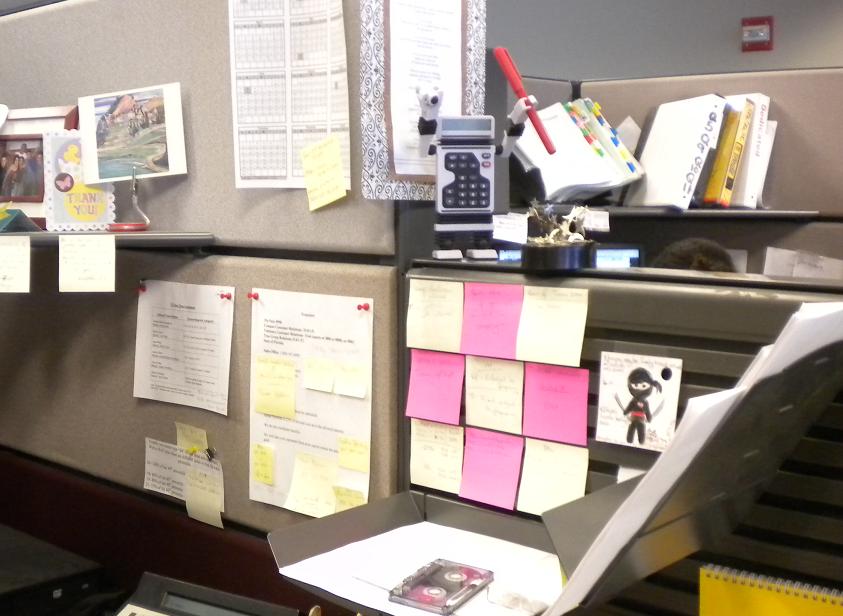Ideally, your web content comes to you from a professional SEO copywriter like me who has written it up following research into your company, your industry’s competitive landscape, and the search volume of your primary keywords.
In real life, that’s not always how it is. Still, whether you have the ideal situation or something rougher to work with, there will probably be some point at which you will need to edit the copy for your web site.
Here’s how.
If you have a professional writer, the first thing you should check for is accuracy. In a project I did with GlowHat, I wrote about the padding of a cubicle. As it happens, cubicles don’t have padding. What can I say? I had only seen cubicles at a distance, and I thought they’d have padding. The nice people at the Assurant building in Kansas City allowed me to go all over their building last week inspecting their cubicles thoroughly, and I won’t be making that mistake again. However, it is always possible that someone writing about your business as an outsider will make an error.
It’s also possible that your content, if it began with brochures or your old website, will have outdated information that’s no longer accurate. Check for things that aren’t true and provide accurate information to replace it.
Check for tone. The tone, voice, and feeling of your content will probably be based on your writer’s impression of you and your company, as well as on the kind of tone that seems to be standard or trendy in your industry. If you write your own content (or someone in your company does), it’ll also reflect the personal voice of the writer. Is it right for your company? Does it give the kind of impression you want to give? Does it fit with the visual element of your website and your company brand?
Make sure you have the right keywords, and that you’re using them. Your site should be a wonderful experience for your human visitors, but you also have to communicate with search engines in order to be found. If people are looking for “baby clothes” and you’re writing about “togs for the nippers,” you have a problem.
Are you making your point? On your homepage, you probably get between 200 and 500 words in which to say the most important thing about your company — and that means the most important thing to your customers, not to you. Make sure that you’ve said it. Many people have trouble getting to their point, and end up with 250 words of vague general introduction before, or perhaps instead of, the point they really want to make. If you’re working with a professional, allow him or her to throw the generalizations away. If you’re doing it yourself, you’ll have to do the throwing out yourself, even if you worked really hard on your paragraph and love it.
Track down the errors in grammar, punctuation, and spelling. This is very hard to do for yourself. You know what you meant, and you believe that you know how to use colons correctly, even if you’re wrong. You probably won’t catch all your own errors and typos. Get someone else in the office to have a look. If you’re editing your web pro’s content, you should send it back for cleanup after you make changes, just in case.
If you’re working with a professional, there shouldn’t be any errors (though see above for the difficulty of catching all your own typos), but there may be things on which you have a difference of opinion. For example, some people use commas after each element in a list (“dogs, cats, and birds”) while some don’t (“dogs, cats and birds”). As the site owner, you can have your way with these choices, just because you prefer it.
Once you’ve checked on all these aspects of your content, you should be happy with it. You’re not through, though. You should also test your content. I’m not saying that you should test every blog entry before you post it, but you should test your homepage content before launch. Read Testing Your Website for a simple method of testing your content, and make it part of your pre-launch routine.
By the way, if you’re not the site owner, but the designer, you shouldn’t have to edit the web copy. If it doesn’t fit the design, you should send it back to your copywriter and ask for the changes you need. If you don’t have a copywriter and you’re stuck editing the client’s text, you should get a copywriter.


Leave a Reply